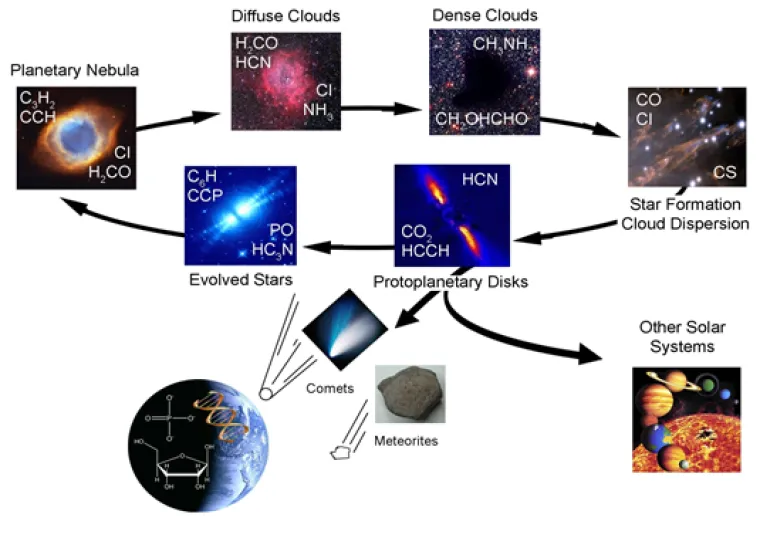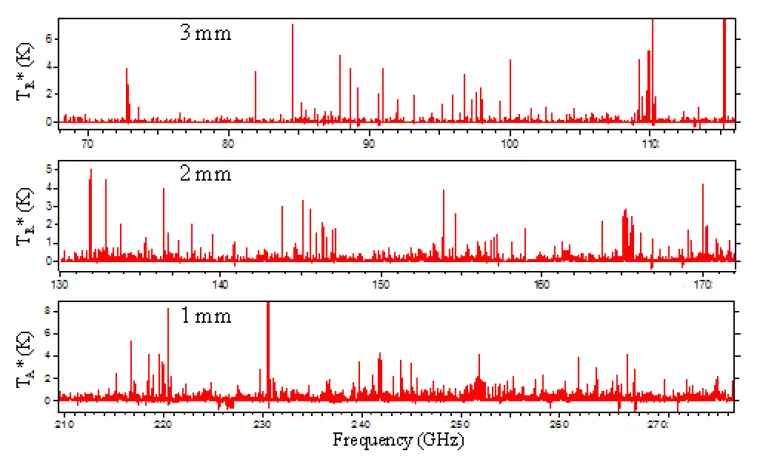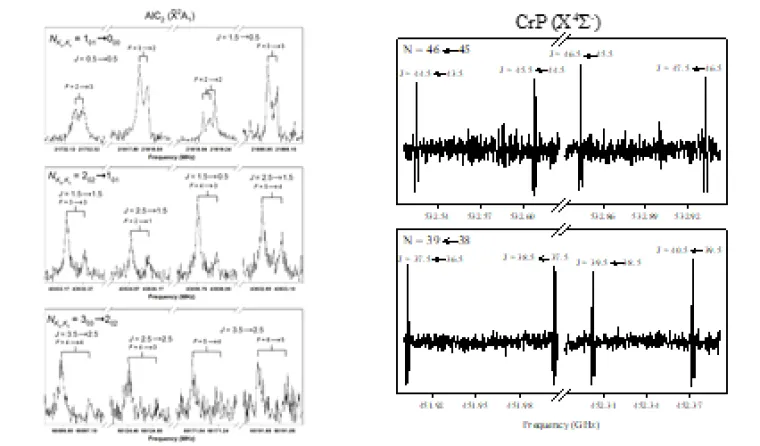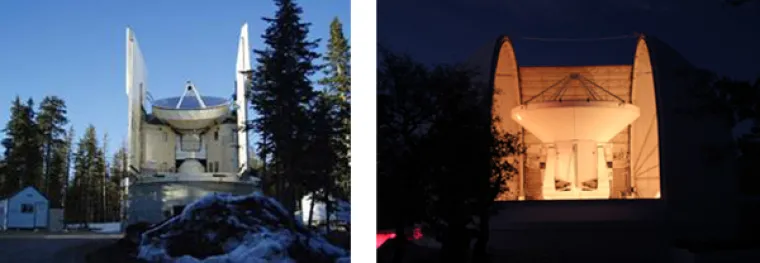Regents Professor, CBC and Astronomy
Degrees and Appointments
- B.S. 1978, Rice University
- Ph.D. 1984, UC Berkeley
Fields of Study: Physical Chemistry, Astrochemistry
Research Specialities: Astrobiology and Astrochemistry, Chemical Physics, Instrument Development, Spectroscopy/Molecular Structure
Awards and Honors:
- Laboratory Astrophysics Prize, American Astronomical Society, 2019
- Barbara Mez-Starck Prize in Molecular Spectroscopy, 2015
- Elizabeth and Keith Hege Galileo Circle Fellow, 2011
- Fellow of the American Physical Society, 2008
- National Science Foundation Creativity Award, 2001
- National Science Foundation Visiting Professorship for Women, 1994-1996
- National Science Foundation Presidential Faculty Fellow, 1992-1995
- National Science Foundation Presidential Young Investigator, 1990-1992
Research
At present, more than 170 different chemical species have been detected in interstellar space, primarily in giant gas clouds located throughout our Galaxy and in gaseous material surrounding old stars, but also in other unusual environments, as illustrated in Figure 1. Despite the extreme conditions of the so-called interstellar medium (ISM), which is typically quite cold (T ~ 10-50 K) and very diffuse (n ~ 10³ - 106 particles/cc), chemistry flourishes, producing many common, but sometimes exotic, compounds, including reactive radicals and molecular ions, ranging in size from simple diatomics like CO to complex species like C60. It is now recognized that we live in a molecular universe, and that interstellar molecular material is continuously recycled in the ISM. The life cycle is shown in Figure 1. Molecules form in dying stars, and then are passed on theough the planetary nebula stage and into the diffuse ISM. This matter subsequently collapses to form dense clouds, the sites of star and solar systems. The stars eventually die, and the cycle repeats. As solar systems form, some of the pristine molecular material from the nascent molecular cloud is delivered to young planet surfaces via comets, meteorites, and interplanetary dust particles. This material is thought to have influenced early biochemistry, thus tracing life's originss back to interstellar space.

Figure 1: The interstellar molecular life cycle, tracing molecular formation from the ejecta of dying stars into the diffuse, and then dense ISM, and subsequently into regions of star and solar system formation via the protoplanetary disk stage. Some of the pristine interstellar molecular matter is the delivered to planet surfaces via bombardment by comets, meterorites, and interplanetary dust particles.
The primary objective of research in the Ziurys group is to understand the molecular life cycle and study the chemistry occurring in the vast regions of space via an interdisciplinary approach that involves high resolution molecular spectroscopy in the laboratory and radio astronomical observations. The University of Arizona is unique in this regard as it has its own radio telescopes, operated by the Arizona Radio Observatory (ARO), which can be used for graduate research. Radio telescopes are used to measure rotational molecular spectra and identify new chemical compounds by their "fingerprint" signatures, which are known from laboratory measurements. We are interested in discovering what chemical compounds exist in space and in which types of interstellar sources, how they are formed, and how this impacts the origins of solar systems and planets, and ultimately life. As shown in Figure 2, many interstellar objects are have very dense and complicated radio spectra, illustrating the complexity of their chemistry. Displayed in this figure is a "spectrum" of the cloud Sagitarrius B2N, which is located near the center of our Galaxy. Over the wavelngth region 68 - 280 GHz, over 15,000 spectral lines are present, a large fraction which are unidentified. Possible carriers of these unidentified lines are smaller species containing metals such as iron, magnesium, and chromium; (also significant for organometallic chemistry), organic molecules related to sugars and nucleic acids, and phosphorus-bearing compounds.

Figure 2: The millimeter-wave spectrum (68 - 280 GHz) of the molecular cloud Sagittarius B2N, showing over 15,000 individual spectral emission and absorption lines, many which are unidentified. These data were obtained with the telescopes of the Arizona Radio Observatory
Laboratory studies focus on the measurement of gas-phase rotational spectrum of species of astrophysical interest in the microwave, millimeter and THz regions of the electromagnetic spectrum (~3 GHz - 1.5 THz). This goal requires design and construction of our own spectrometer systems, as shown in Figure 3. Currently, there are four working instruments in the Ziurys group: two mm/sub-mm direct absorption systems, a velocity-modulation spectrometer specifically designed to study molecular ions, and a pulsed, Fourier transform microwave/mm-wave (FTMmmW) machine. Part of the laboratory work also concerns developing exotic synthetic techniques for creating these transient species in detectable concentrations including electrical discharges and laser ablation. We have succeeded in recording the spectra of a wide range of metal-bearing species, in particular radicals and, more recently, ions, such as AlC2, FeCN, FeCO+,CrCCH, FeO+, and CrP. Many of these species have unpaired electrons, and thus their spectra exhibit complex fine and hyperfine splittings (see Figure 4). Analysis of such data requires a detailed knowledge of quantum mechanics. Other investigations include possible pre-biotic species such as EtNH2 methylisocyanate and hydroxyacetone. The fingerprints measured in the laboratory enable such species to be identified in space.

Figure 3: Two of the spectrometers of the Ziurys group: Left: Fourier transform microwave/mm-wave system, with the laser ablation source. Right: Millimeter wave direct absorption spectrometer.

Figure 4 LEFT: Laboratory Fourier transform microwave spectra of the AlC2radical in its 2A1 electronic ground state, showing aluminum hyperfine components in three rotational transitions (Halfen and Ziurys 2018). RIGHT: Millimeter-wave direct absorption spectra of the CrP radical (X4Σ-), displaying the quartet fine structure splittings in two rotational transitions (Burton et al. 2018).
Observational studies in the Ziurys group include the identification of new interstellar species, such as FeCN, AlO, AlOH, CCN, and PO, which is usually conducted in conjunction with laboratory work. The newest molecule found by the Ziurys Group is CH3NCO, which was identified in the spectral survey data of SgrB2N. Other projects involve elucidating the chemistry associated with evolved stars, such as VY Canis Majoris, and the survival of molecules in planetary nebulae such as the Helix. Observations are also currently being conducted to trace the history of carbon and organic chemistry through the molecular life cycle, as shown in Figure 1.

Figure 5: The Submillimeter Telescope (SMT) of the Arizona Radio Observatory, located at Mt. Graham, AZ (left), and the new ALMA prototype 12-meter telescope at Kitt Peak (right).
Interstellar molecules are primarily studied using the telescopes of the Arizona Radio Observatory (ARO), as well as the Atacama Large Millimeter Array (ALMA) and the IRAM 30 m. ARO operates the Submillimeter Telescope (SMT) on Mount Graham, AZ, and the new 12-meter (12m) Telescope at Kitt Peak (see Figure 4). The new 12m is built with the most advanced technology for radio telescopes. It was one of the three prototype antennas built and tested for ALMA, and became property of the UA on March 23, 2013. The surface is made of rhodium coated panels, while the structure is formed from carbon fiber.
“Interstellar Molecules and Their Prebiotic Potential,” L.M. Ziurys,The Handbook of Astrobiology, Ed. V. Kolb (Boca Raton: CRC Press), 147-163 (2019).
"Extreme 13C,15N,17O Isotopic Enrichment in the Young Planetary Nebula K4-47,” D.R. Schmidt, N.J. Woolf, T.J. Zega, and L.M. Ziurys, Nature, 564, 378 (2018).
“Examining Metal-Phosphorus Bonds: Submillimeter Spectroscopy of the CrP Radical (X4Σ−),” M.A. Burton, D.T. Halfen, and L.M. Ziurys, Chem.Phys. Lett., 708, 228 (2018).
“Widespread CCH and c-C3H2 in the Helix Nebula: Unraveling the Chemical History of Hydrocarbons,” D.R. Schmidt, L.N. Zack, and L.M. Ziurys, Ap.J. (Letters), 864, L31 (2018).
“Pure Rotational Spectrum of the T-Shaped AlC2 Radical (X̃ 2A1),” D.T. Halfen and L.M. Ziurys, PCCP, 20, 11047 (2018).
“New Circumstellar Sources of PO and PN: The Increasing Role of Phosphorus Chemistry in Oxygen-rich Stars,” L.M. Ziurys, D.R. Schmidt, and J.J. Bernal, Ap.J., 856, 169 (2018).
“Examining Transition Metal Hydrosulfides: The Pure Rotational Spectrum of ZnSH (X̃ 2A¢),” M. P. Bucchino, G. R. Adande, D. T. Halfen, and L. M. Ziurys, J. Chem. Phys., 147, 154313 (2017).
“New Identifications of the CCH Radical in Planetary Nebulae: A Connection to C60?,” D.R. Schmidt and L.M. Ziurys, ApJ., 850, 123 (2017).
“New Detections of HNC in Planetary Nebulae: Evolution of the [HCN]/[HNC] Ratio,” D.R. Schmidt and L.M. Ziurys, ApJ., 835, 79 (2017).
“Following the Interstellar History of Carbon: From the Interiors of Stars to the Surfaces of Planets,” L.M. Ziurys, D.T. Halfen, W.D. Geppert, and Y. Aikawa, Astrobiology, 16, 997 (2016).
“Terahertz Spectroscopy of CrH (X 6Σ+) and AlH (X 1Σ+),” D.T. Halfen, and L.M. Ziurys, Ap.J., 833, 89 (2016).
“Millimeter-Wave Spectroscopy of CrC (X3Σ-) and CrCCH (X6Σ+): Examining the Chromium-Carbon Bond,” J.Min and L.M. Ziurys, J.Chem.Phys., 144, 184308 (2016).
“Hidden Molecules in Planetary Nebulae: New Detections of HCN and HCO+ from a Multi-object Survey,” D.R. Schmidt and L.M. Ziurys, Ap.J., 817, 175 (2016).
“Rotational Spectroscopy of ClZnCH3 (X1A1): Gas-phase Synthesis and Characterization of a Monomeric Grignard-Type Reagent,” J. Min, M.P. Bucchino, K. Kilchenstein, and L.M. Ziurys, Chem.Phys.Lett., 464, 174 (2016).
“Submillimeter/THz Rotational Spectroscopy of SH+ (X 3Σ-): The Complete N = 1 ← 0 Transition,” D.T. Halfen and L.M. Ziurys, Ap.J., 814, 119 (2015).
"Interstellar Detection of Methyl Isocyanate CH3NCO in Sgr B2(N): A Link from Molecular Clouds to Comets,” D.T. Halfen, V.V. Ilyushin, and L.M. Ziurys, Ap.J (Letters), 812, L5 (2015).
“Prebiotic Chemical Evolution in the Astrophysical Context,” L.M. Ziurys, G.R. Adande, J.L. Edwards, D.R. Schmidt, D.T. Halfen, and N.J. Woolf, Origins of Life and the Evolution of the Biosphere, 45, 275 (2015).
"The Millimeter-Wave Spectrum of CCN (X2Πr): A Combined Fourier Transform and Direct Absorption Study,” J.K. Anderson, D.T. Halfen, and L.M. Ziurys, J. Mol. Spectrosc., 305, 1 (2015).
“Sulfur and Silicon-Bearing Molecules in Planetary Nebulae: The Case of M2-48,” J.L. Edwards and L.M. Ziurys, Ap.J. (Letters), 794, L27 (2014).
"Detection of CCN (X2Πr) in IRC +10216: Constraining Outer-Envelope Carbon-Chain Chemistry,” J.K. Anderson and L.M. Ziurys, Ap.J. (Letters), 795, L1 (2014).
“Structural Determination and Gas Phase Synthesis of Monomeric, Unsolvated IZnCH3 (X1A1): A Model Organozinc Halide,” M.P. Bucchino, J.P. Young, P.M. Sheridan and L.M. Ziurys, J. Phys.Chem. A., 118, 11204 (2014).
"Fourier Transform Microwave/Millimeter-wave Spectroscopy of the ScC2 (X2A1) Radical: A Model System for Endohedral Metallofullerenes," J.Min, D.T. Halfen, and L.M. Ziurys, Chem. Phys. Lett., 609, 70 (2014).
"Millimeter Observations of CS, HCO+, and CO Towards Five Planetary Nebulae: Following Molecular Abundance with Nebular Age," J.L. Edward, E.G. Cox, and L.M. Ziurys, Ap.J., 791, 79 (2014).






